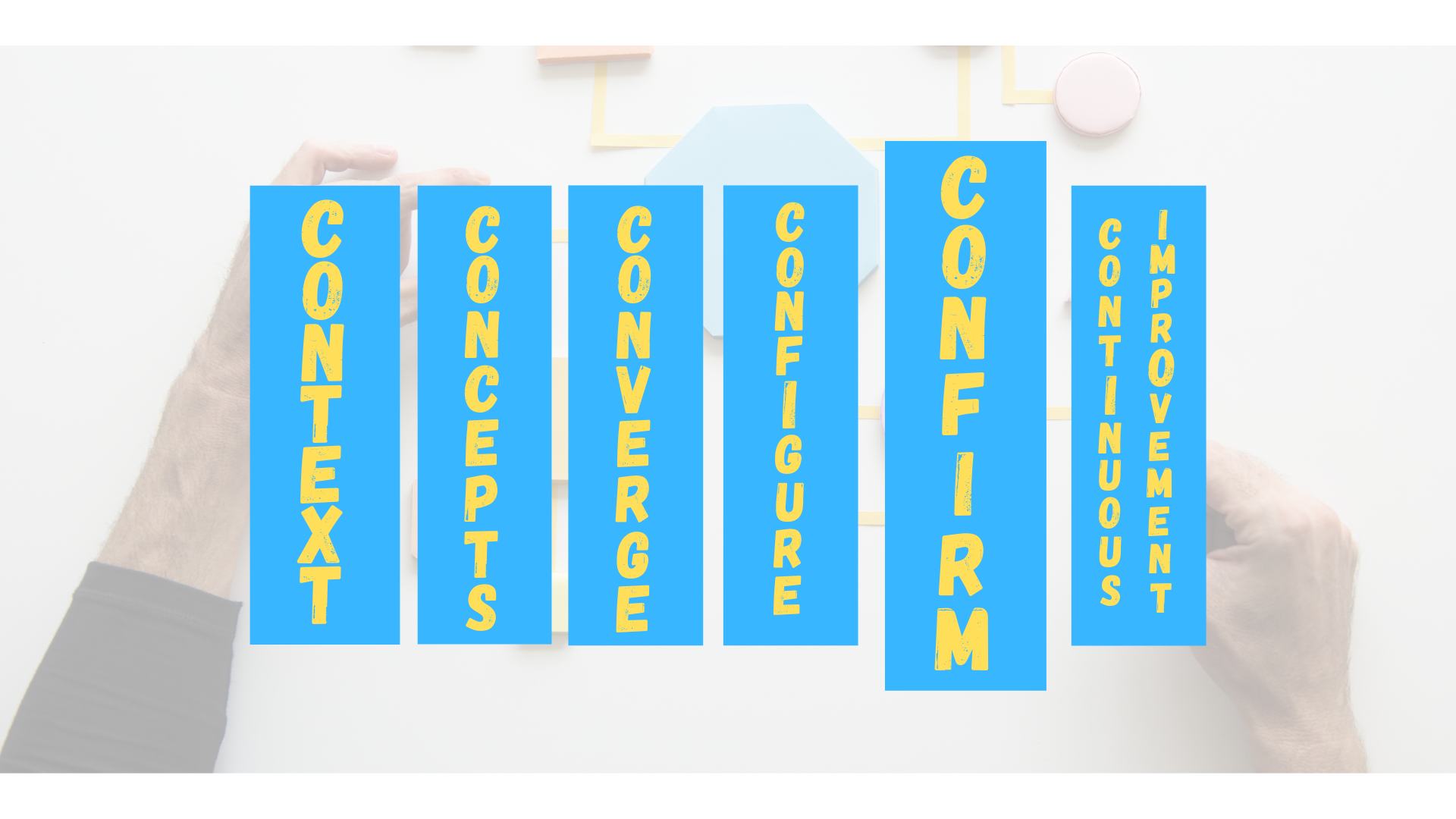
Change management from the inside out
FEATURE – The author discusses how the daily practice of lean thinking develops perseverance and the grit a leader needs to improve an organization.
Words: Karen Gaudet, Director of Learning, Lean Enterprise Institute
Being a few layers removed from the value-creating work of the front line, it’s all too easy for a leader to get caught up in what their role entails on paper. As the day unfolds, a top executive is typically pulled into a million different directions – participating in a meeting, analyzing a report, etc. It is easy to become convinced that this is the work of the leader, even though these activities are simply a result of what is happening in the business.
My experience tells me that the truest way to fulfill the company’s promise to its customers is for the executive to understand the details of the front-line work. This is where the company connects with the customer by delivering to them the artifacts of all other activity taking place within the organization. The work must be designed and improved to flow and the leader’s job is to develop an interdependent system that reveals problems, which people are then asked to solve. I see no greater display of respect for people.
In the lean world, this is a common topic of conversation. There is a recognition that, in order to learn how to successfully lead an organization, a leader needs to get close to the work and understand how it is done. As we know, this is easier said than done. As attempts to improve the organization take shape, leaders are constantly faced with their own assumptions and lack of understanding of the work and the next stage of the transformation the business is entering. Their vulnerability is therefore exposed.
Being able to recognize and accept your own vulnerability while remaining effective as a leader requires a huge level of skill development, so that you can learn to truly be present with what’s required of you when the moment calls for it. In general, a leader is seen as someone who has all the answers and is supposed to tell people what should be happening (granted, sometimes the situation calls for an instructional approach by the leader, as the team member does not yet hold the technical skills necessary to solve a problem). Conversely, Lean Thinking teaches us that the role of a leader is to authentically discover what the current situation calls for and how they can help.
Indeed, the common understanding of what the job of a leader entails and the urgencies of the every-day work (aka driving the business) often distract top executives from their true responsibility: getting to know the work intimately. The practice of observing and improving the work keeps you tied in and grounded so that you can build the real skills you need as a leader. It will teach you to answer questions, such as “What’s needed right now?”, “What’s happening with the work?” or even “What will be needed next?”
The rigorous discipline of understanding enables you to also develop those who lead the direct work. Through this process, you are able to ask them questions about the details of how the work is getting done and what problems exist. Either they demonstrate that they understand or a knowledge gap will be revealed. This approach can also go wrong, of course, if the leader focuses in on what the people are doing or not doing instead of the work system and what actions are necessary to improve it.
Improving how the work is done naturally improves the skills and capabilities of the people. The value for the executive to deliver to the business is to develop the people who are leading the work and develop their team members’ critical thinking and problem-solving skills.
As a leader, you come to the gemba with a unique perspective and understanding that others don’t have. You will likely have a broader vantage point on the overall organization. As you become intimate with the details of the work, your understanding of the business will deepen. For instance, you’ll be able to see how marketing is driving demand for the product, how design is enabling a quality experience for the customer, how gaps or problems are showing up in the financial management and reporting, or how human resources is understanding and supporting the workforce by ensuring proper training. Are the skills and capabilities needed for a lean way of working actually understood and being trained well? It’s a critical question to ask, because the performance of the business depends on this.
WE ALL HAVE A ROLE TO PLAY
But how can we ensure our go see work is effective? How can we make our gemba walks meaningful?
When a leader shows up at the gemba and listens to a front-line worker’s report-out, the risk is that they separate themselves from the situation they are hearing about. It’s understandable – it is not their daily work. Yet, that’s exactly when they need to make an extra effort, encouraging themselves to look at the work in depth and educating themselves on what parts of it are resulting in the situation the report-out is highlighting. That’s the moment they should ask more questions and then follow up by inviting people to go see together.
It is not enough to go see passively, listening to what’s being said without a real commitment to understanding it. What’s necessary, instead, is for leaders to admit they don’t know and ask questions until they develop an intimate understanding of the current state. Learning to do this and developing that discipline can be one of the hardest, yet most impactful things a leader will be called to do in her career and, truth is, top execs will often need help to get there.
In the lean community, there is a tendency to say, “If the leader would just do it, we’d be able to transform.” However, it is not effective nor accurate to simply blame the leaders who struggle to make a transition to a lean mindset. While it is true that top management often doesn’t understand (or worse, doesn’t want to see) what’s really required of them in a transformation, my experience has taught me that we are all responsible for the success of a transformation and that it is only through understanding the work and improving how it is done that leaders’ behavior will change.
We all have a role to play in transforming leadership behaviors – as well as our own. Take lean coaches, for example. They are required to create opportunities for leaders to experience the benefits of getting to intimately know the work and to think through the ways in which the business’ performance and ability to innovate, people’s capabilities and customer experience will improve if the work improves.
Another fundamental role is that of the leaders of key business functions, in particular Marketing, Finance and HR. They have the ability to exercise influence on leadership, who regularly asks for their input on how to move the company forward. Lean Thinking gives these important figures the opportunity to understand how the work is done and its impact on the business, a message they can then pass on to leadership to help them steer the ship in the right direction. Let me give you a couple of examples. Among other things, an HR leader is responsible for acquiring and retaining the talent the organization needs. Wouldn’t it be helpful for them to go to the gemba to experience the front-line work, talk with those who are getting it done and discover the problems that are getting in their way? In the same way, wouldn’t it be beneficial for a Finance leader to work in partnership with the front line to develop the ability to connect what’s happening in the every-day work with the management reporting used to represent the performance of the organization? Key functional leaders can give an extraordinary contribution to the success of a lean transformation, even though it will not feel like a comfortable thing to do at first.
Indeed, Lean Thinking takes us all out of our comfort zones. It calls for a conscious choice to train ourselves to think in a different way and admit we don’t have all the answers. Because nobody is all-knowing, a leader’s first decision in a lean transformation is on who her key contributors will be. A lean transformation should start with carefully selecting the cross-functional leaders who will routinely take on shared learning experiences, build their technical and social capability as a leadership team in service to the front line. There’s nothing like those shared learning experiences. They represent the most intimate, powerful opportunity to improve I have ever witnessed.
For Lean Thinking to take root in our organizations, leaders – from department heads to the CEO – need to experience a shift in their mindset and accept they don’t know everything. They need to be humble enough to accept that the answers to the business’ most critical questions are to be found in the nitty-gritty of the front-line work. In turn, mastering the work and understanding it in detail is the key to unlocking our ability to collectively effect change. It’s change management, but from the inside out.
Want to Keep Learning?

Read Steady Work by Karen Gaudet, who managed 110 stores as a regional manager for Starbucks. She offers smart, practical business advice and a heartfelt personal story about how a continuous improvement system revitalized the retailer during the global financial crisis and helped employees in Newtown, CT, get through a national tragedy.
THE AUTHOR

Karen Gaudet is Director of Learning at the Lean Enterprise Institute. She has more than 20 years of experience leading, training, and coaching staff and executives in rapid-growth environments. Most recently, she was regional director of licensed operations at Starbucks Coffee Company, where she built a consistent track record of growing the number of retail stores along with the continuous improvement capabilities of people.
Read more


NOTES FROM THE GEMBA – On this gemba walk in the cardiology department of a Parisian hospital, the author discovers how the team is changing its internal dynamics and processes to make lean their way of thinking.


FEATURE – SMEs represent the backbone of many economies, but few of them contemplate embarking on a lean transformation. The author discusses why and offers some tips to help them embrace lean.


SERIES – The authors discuss the fifth of six elements in their 6CON process development model – CONfirm – leveraging a robust launch readiness approach to finalize the process while ensuring it meets the targets set in the business plan.


INTERVIEW - What do the United States Army’s Special Forces unit and Toyota have in common? To find out, we spoke to the Green Berets’ former Director of Training at the LEI summit in New Orleans.

